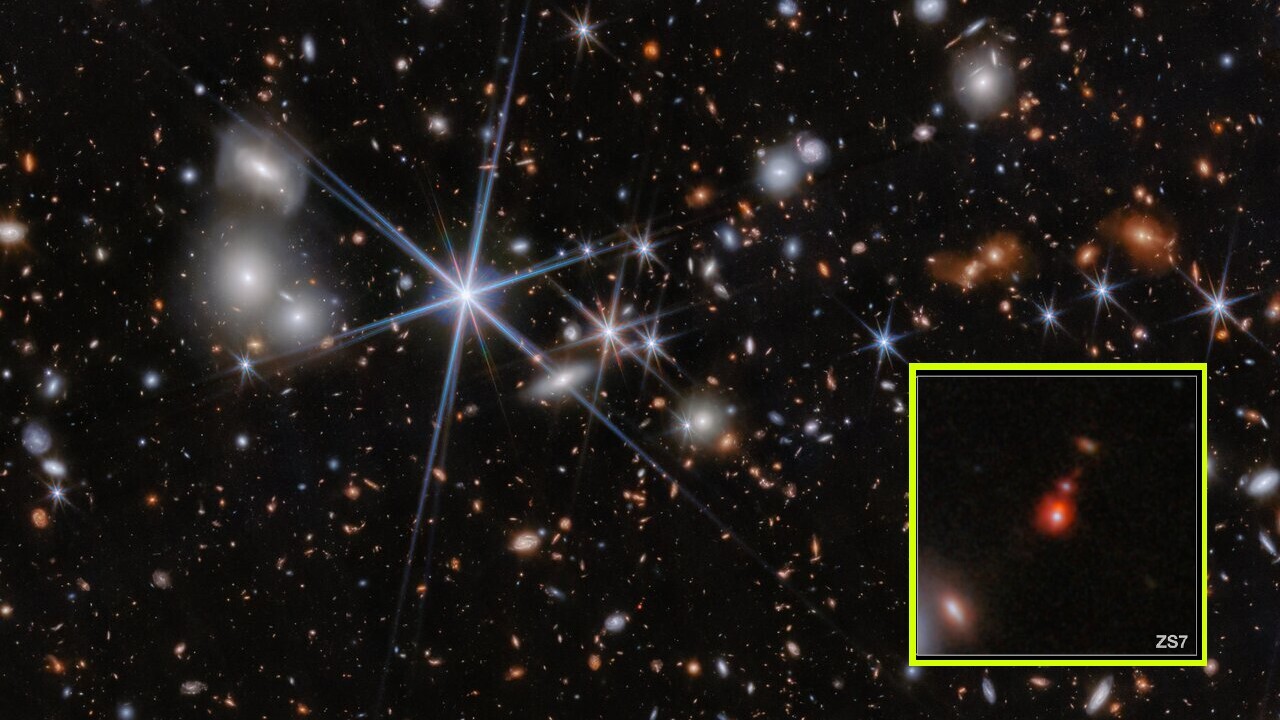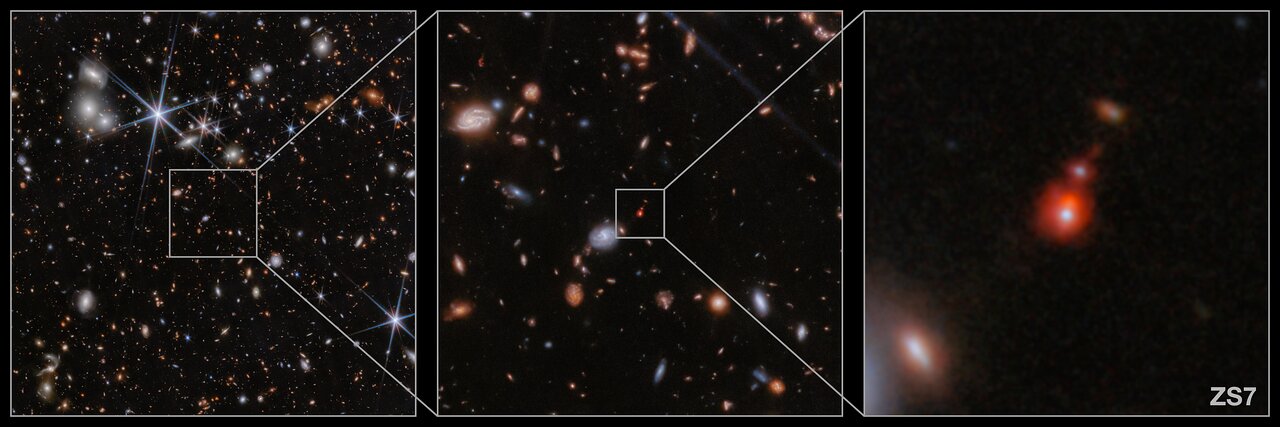James Webb telescope spots 2 monster black holes merging at the dawn of time, challenging our understanding of the universe
New observations with the James Webb Space Telescope reveal the most distant pair of merging black holes ever spotted. The discovery further challenges leading theories of cosmology.

Astronomers have used the James Webb Space Telescope (JWST) to detect the most distant pair of colliding black holes in the known universe. The cosmic monsters — each estimated to be as massive as 50 million suns — have been detected more than 13 billion light-years away, at a time just 740 million years after the Big Bang.
While not the biggest or oldest black holes ever detected, the merging pair have still managed to grow bafflingly large for such an early time in the universe's history, the study authors said in a European Space Agency (ESA) statement. This discovery further challenges leading theories of cosmology, which fail to explain how objects in the universe's infancy could grow so large, so fast.
"Our findings suggest that merging is an important route through which black holes can rapidly grow, even at cosmic dawn," the study’s lead author Hannah Übler, a researcher at the University of Cambridge, said in the statement. "Together with other Webb findings of active, massive black holes in the distant Universe, our results also show that massive black holes have been shaping the evolution of galaxies from the very beginning."
Black holes are extraordinarily massive objects with a gravitational pull so strong that nothing, not even light, can escape their clutches. They are thought to form when massive stars collapse in supernova explosions, and they grow by endlessly swallowing up the gas, dust, stars and other matter in the galaxies that surround them.
The hungriest, most active black holes may reach supermassive status — bulking up to be anywhere from a few hundred thousand to several billion times the mass of the sun. One key way that supermassive black holes may reach such gargantuan sizes is by merging with other large black holes in nearby galaxies — a phenomenon that's been detected at various times and places throughout the universe.
Related: After 2 years in space, the James Webb telescope has broken cosmology. Can it be fixed?
The new discovery comes courtesy of JWST's powerful NIRCam infrared instrument, which can detect the light of ancient objects across vast cosmic distances and through obscuring clouds of dust.
In the new study, published Thursday (May 16) in the Monthly Notices of the Royal Astronomical Society, researchers trained the JWST's infrared cameras on a known black hole system called ZS7, located in an early epoch of the universe known as cosmic dawn. Previous observations showed that the system hosts an active galactic nucleus —- a feeding, supermassive black hole at the galaxy's center, which emits bright light as hot gas and dust swirls into the black hole's maw.
Sign up for the Live Science daily newsletter now
Get the world’s most fascinating discoveries delivered straight to your inbox.

Detailed observations with JWST revealed the motion of a dense cloud of gas around the black hole — suggesting it was actively growing — and also pinpointed the approximate location of a second black hole located very close by, likely in the process of merging with the first.
"Thanks to the unprecedented sharpness of its imaging capabilities, Webb also allowed our team to spatially separate the two black holes," Übler said. The team pegged one of the black holes at about t 50 million solar masses; the second black hole, which is "buried" in the dense cloud of gas, likely has a similar mass to its neighbor, but the researchers couldn't get a clear enough view of its radiation to say for sure.
This exceptionally ancient pair of merging black holes adds further weight to the idea that black holes had a huge impact on the evolution of galaxies in the infant universe, growing faster than current theories of cosmology can explain.
The legacy of these massive mergers can still be felt today in the form of gravitational waves — ripples in the fabric of space-time that were first predicted by Albert Einstein, and that were recently confirmed to be a ubiquitous feature of the universe — that spread across space when massive objects like black holes and neutron stars collide.
The ripples released by these faraway, colliding monsters are too faint to be picked up by current gravitational wave detectors on Earth, the study authors added. However, next-generation detectors that will be deployed in space, such as ESA's planned LISA detector (scheduled to launch in 2035), should be able to detect even the most distant ripples from merging black holes. The new results suggest that evidence of these ancient mergers may be far more plentiful than previously thought.

Brandon is the space/physics editor at Live Science. His writing has appeared in The Washington Post, Reader's Digest, CBS.com, the Richard Dawkins Foundation website and other outlets. He holds a bachelor's degree in creative writing from the University of Arizona, with minors in journalism and media arts. He enjoys writing most about space, geoscience and the mysteries of the universe.










